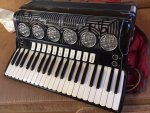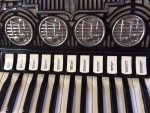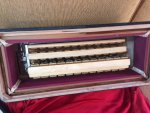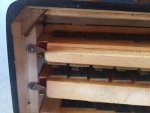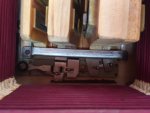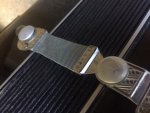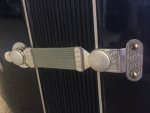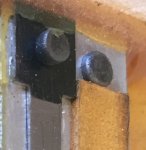Thanks Waldo and Jozz,
Jozz, yes the bellow straps are as you mention and like chainmail, and I think the grill is plastic but the insets in the grill (with the notes on them) are done in chrome or nickel, so not plastic. Ive uploaded some close up pics so you can see
<ATTACHMENT filename=IMG_4693.JPG index=2>
<ATTACHMENT filename=IMG_4695.JPG index=1>
The only reason I thought this might have been a tone chamber was because of a clip I found on youtube when I was trying to find out more about it. The clip is here: <YOUTUBE id=IjK13ySp300 url=></YOUTUBE> and as you can see looks very very similar, and its the only thing Ive managed to find that appears to have the same grill. That said, this one is presumably newer than the one I have as the Paolo Soprani is in a larger font, which I believe means its later... Also, the one in the youtube link has 13 trebble selectors and 5 base, but my one has 11 trebble and 3 base, again I assumed my one has less as it is older.... (but these are all assumptions)
Waldo, very interesting comment on the tone chamber, did you get the PM with the pics of the close ups of the reeds?
Thanks very much for your comments, theyre really helpful.

